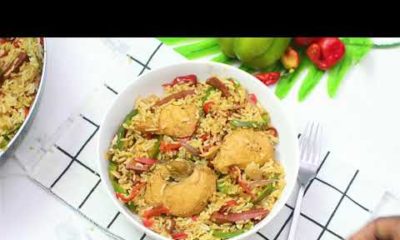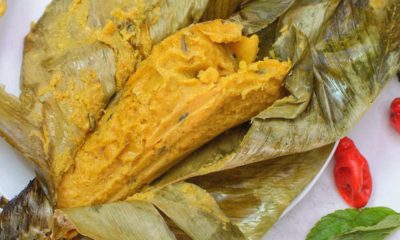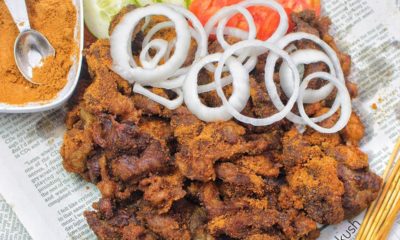Career
Mrs Kush: Maths for Food Business
 I have decided to call it Maths for food business rather than Finance or Accounting, because I am not an accountant and I do not have a finance background.
I have decided to call it Maths for food business rather than Finance or Accounting, because I am not an accountant and I do not have a finance background.
Before we start, I will say this, I AM IN BUSINESS TO MAKE MONEY! I will assume that is the same for you too. Never do a job that is not profitable for the sake of “exposure”. I’m not saying you can’t if you feel so inclined for reasons best known to you but make sure exposure is not one of them.
Remember when you wanted to patch a hole in your fence and you begged the bricklayer on your street to help you “manage” 3K with promises of bigger and better projects? How far? Have you called him to build a mansion yet? Don’t worry you’re not a bad person, we all do it. Remember this, if you accept prices below what is profitable for you, you will have to cut corners to make ends meet. When you do, the client will not remember they paid you less, they will only remember that your service sucked.
Do not buy in bulk
Hunh? Yes! Food is perishable especially fresh food. To minimise the cost associated with spoilage buy only what you need when you need it. The exception to the rule are dry goods such as Rice, Garri or Oil e.t.c even then, you need to think about cash flow. Only buy in bulk if it will not affect your cash flow.
Imagine you bought 10 bags of rice because it was discounted even though there wasn’t an immediate need. A week after the “huge savings”, your oven breaks down and needs to be replaced. If you need your oven to make money daily, it’s not a nice position to be in. To be a responsible business person, you need to ensure you have cash flow to meet planned and unplanned expenses. Not all savings are profitable.
Supermarkets Can Be Good for Commercial Purchases
Not every time Mile 12 or Lagos Island – especially if the numbers are small. During the last tomato crises, I got my fresh tomatoes from supermarkets. It’s not like I didn’t find in the market, but the prices were ridiculous in comparison. You will never find buy one get on free in an open market either. Supermarkets do this often (Please check expiry dates, sometimes it’s because goods are close to expiry not because they are being nice). Supermarkets also discourage your staff from making “profit” because they can’t negotiate with the cashiers to doctor receipts.
Here’s a practical example:
Based on today’s prices that I checked on the internet, we will do the costing for Jollof Rice & Chicken for 25 people. As a rule of thumb for small portions I make between 150g – 200g of rice per person.
Rice: 200g pp x 25 people = 5000g or 5kg – N2500
Chicken: 1 kg of Chicken is about 4 decent sized laps. For 25 people, I need 7 kg – (28 pieces)
1 kg of Chicken is now N1,400 (Lord save us!); N1400 x 7 = N9800
Fuel (Gas/Kerosene/firewood): Gas costs me 4k per cylinder and lasts me a month when I’m not doing a lot of cooking. For events, it can be gone in a day or two. For this example, I will calculate based on my domestic usage tariff; 4000/30 days = N133. Since I am making 2 different items, I cost twice. N133 x 2 = N266
Cook – N5000 (Imagine you are out of town and needed to pay a trusted cook to fulfil the order)
Rental of kitchen space If you’re in a commercial premises, calculate your annual rent and divide by the number of days you work in a year. If it is a home kitchen, decide how much your kitchen is worth for a day rate and charge it. For this example, we will use a day rate of 5k.
Based on an annual rent of N500,000; working 5 days a week x 40 weeks in a year = 200 working days.
Day rate is N500,000 ÷ 200 working days = N2500.
Double it to cover the cost of utilities, diesel e.t.c and the depreciating value of your equipment like blender, cooker, pots, pans e.t.c. You can decide to be more thorough in calculating actual cost for utilities and equipment to get a more accurate figure.
Someone once said they thought it wasn’t fair to cost the day rate for each customer because they usually have more than one customer daily. My response was if you serve 50 people or 1 person daily, your quality of service should be the same. You should therefore cost in such a way that makes you sustainable even when business is slow.
Before we do the final calculation, what do you think a decent plate of Jollof Rice and Roast chicken should cost? N1,000, N500, N5,000?
Let’s see…
| Item | How you should cost | How you probably cost |
| Rice | 2500 | 2500 |
| Pepper Blend (tomatoes, onions e.t.c) | 1500 | 1500 |
| Garnishing | 200 | I have some in the fridge |
| Tomato paste | 150 | 150 |
| Seasoning Cubes | 50 | I have some already |
| Curry, thyme, bay leaf | 200 | I have some already |
| Oil | 500 | 500 |
| Chicken | 9800 | 9800 |
| Gas | 266 | I already have gas / I got it for free |
| Chicken seasoning | 300 | I have some at already |
| Disposable plates | 1250 | 1250 |
| Serviette | 300 | I have some left over from my last event |
| Disposable forks | 500 | I have some left over from my last event |
| Cook | 5000 | I will cook myself, I don’t deserve to be paid |
| Transportation (Market runs & Delivery to clients) | 2000 | There’s fuel in my car, I also happen to own a filling station |
| Phone call allowance | 500 | I have credit on my phone, no shaking |
| Kitchen space | 5000 | My landlord is a nice man |
| Total Cost | N 30,016.00 | N 15,700.00 |
| Cost per person | N 1200.64 | N 628 |
Right of the back the total cost is 30K for 25 people. That’s an estimated N1200 per person without profit! If your costing is however like the 2nd column, half of your actual costs have gone to goodwill. What an angel you are!
If you’re wondering why ends are not meeting, this is it. You’re running a charity not a business. Imagine you decided to charge N1,000 per person you have lost 5K! Do that 10 times and you’re 50k in the hole. Is it not better to be sleeping and drinking Garri?
Some may argue with you that they can get cheaper rice at fast food places nowadays. To that your response should be the quantity and quality of your food is better (hopefully). You cannot compete with them anyway; they buy ingredients in truck loads and are held to less standards.
It’s up to you to decide what margins are suitable to make your food business profitable and add that to your cost. Sometimes you may get things cheaper and choose to pass on the savings to your client. That is fine, just make sure you do the maths properly.
Finally, don’t be afraid to lose a client especially if the price is not right, if you are consistent in quality and service, it’s only a matter of time before referrals start pouring in. Make sure you position yourself properly and take advantage of social media and other forms of low cost advertising to help you grow.
Love,
Mrs Kush.
Click here to download the calculation above as a spreadsheet to enable you insert your own figures.
Photo Credit: Dreamstime






















